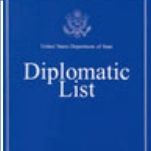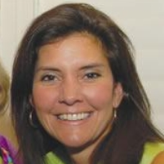The Office of the Chief of Protocol, a division of the Department of State, primarily advises and assists the president, vice president and secretary of state on matters of diplomatic protocol, or etiquette. The office arranges detailed itineraries for foreign dignitaries visiting the United States, and accompanies the president on official travels abroad. It also plans and executes diplomatic ceremonies and dinners, oversees the accreditation of foreign ambassadors and manages the Blair House, which is the president’s guest residence for visiting foreign leaders.
The concept of diplomatic protocol is steeped in history, dating back to the first recorded exchange of foreign envoys initiated by the Babylonians. Today, almost every country has a counterpart to the U.S. chief of protocol.
- The Office of the Chief of Protocol’s duties include planning for state funerals, such as President Reagan’s in 2004. For starters, the State Department sent invitations to services at both the Capitol Rotunda and the National Cathedral to some 170 foreign embassies and international organizations.
- It’s customary for leaders who are visiting foreign countries to give gifts to their counterparts and other senior officials who helped organize their stay. Generally, the respective gift officers will meet privately to exchange the presents, but sometimes leaders want to do it personally. According to former Chief of Protocol Donald Ensenat, one of the most memorable personal gift exchanges was when President George W. Bush gave outgoing Japanese Prime Minister Junichiro Koizumi a jukebox filled with rock ‘n’ roll hits from the 1950s and 1960s. Bush also took Koizumi, a well-known Elvis Presley fan, to Graceland in Memphis, Tenn.
- When leaders of friendly foreign nations are inaugurated, the United States often sends a delegation with at least one protocol officer, who acts as a liaison to the foreign government. This was the case at the inauguration ceremony of Argentine President Cristina Fernandez de Kirchner on Dec. 10, 2007.
- Perhaps one of the most famous breaches of diplomatic protocol occurred when President George H. W. Bush vomited on Japanese Prime Minister Kiichi Miyazawa during a state dinner on Jan. 8, 1992. Bush then fainted; when he came to, he reportedly announced that he felt fine.
- Critics accused Vice President Dick Cheney of disrespectfully breaching protocol when he wore an olive-colored parka, a ski cap and hiking boots to a ceremony commemorating the 60th anniversary of the liberation of the Auschwitz concentration camp. Other attendees were dressed in formal, mostly black attire.
- In June 2006, President George W. Bush ran afoul of protocol when he gave an impromptu shoulder massage to German Chancellor Angela Merkel, who grimaced and shrugged him off.
- Venezuelan President Hugo Chavez was widely castigated for breaking protocol when he called President George W. Bush “the devil” before the United Nations General Assembly in late 2006.
(eDiplomat)
A chief of protocol must pay careful attention to detail and be well-versed in cultural differences to ensure diplomatic events proceed smoothly. For example, he or she must, when planning a state dinner, be aware of officials’ ranks when making seating assignments, must choose entertainment that doesn’t offend foreign sensibilities and must even choose a culturally appropriate color for flowers, among other responsibilities. Pamela Ahearn, who served as chief of protocol during the Reagan administration, was also scrupulous about checking the dietary requirements of visiting heads of state and government.
- The Blair House division maintains 1651 Pennsylvania Ave., or the president’s guesthouse for visiting heads of state and government. The federal government purchased the house during World War II, and it underwent substantial renovations in the 1980s. Blair House has hosted guests an average of 24 times each annually and served as the venue for 30 events over the past few years.
- According to the OCP Web site, the Ceremonials division “organizes ceremonial and official functions hosted by the vice president, secretary of state and other high-ranking United States government officials” and also maintains the U.S. order of precedence, answers questions on diplomatic etiquette and helps send out presidential holiday greeting cards. The gifts officer, who is responsible for suggesting, purchasing and delivering official gifts for the president, vice president and secretary of state, is a part of this division.
- Generally speaking, the Diplomatic Affairs division handles all issues having to do with foreign diplomatic missions in the United States. This includes the accreditation of foreign ambassadors and other diplomatic officers who have been assigned to this country and the registration of non-diplomats who are working in the United States as employees of their government. The division, which publishes the Diplomatic List, is led by the assistant chief of protocol for diplomatic affairs.
- The Management division is the administrative unit of the Office of the Chief of Protocol. It oversees human resources, finances, information technology, security and the Blair House division. It also helps coordinate the other divisions when planning for ceremonies.
- The Visits division is responsible for devising and executing detailed itineraries when high-ranking foreign officials visit the United States. The division also facilitates foreign press and handles the logistics when U.S. presidential delegations travel abroad.
(a press release from the White House Web site)
Child star Shirley Temple Black served as chief of protocol from July 1, 1976, to Jan. 21, 1977.
- Table of Contents
- Overview
- History
- What it Does
- Where Does the Money Go
- Controversies
- Suggested Reforms
- Comments
- Leave a comment


Peter A. (Pete) Selfridge was nominated by President Barack Obama on December 13, 2013 to be the U.S. Department of State’s Chief of Protocol with the rank of Ambassador during his tenure in the job. The duties of the chief of protocol include greeting heads of state and government leaders, assisting presidential delegations in their overseas travel and planning summits and other multilateral events.
Selfridge is a native of Minnetonka, Minnesota. He began his career in Washington in 1993, shortly after earning his B.A. from the University of Iowa. His first job in the capital was as a staff assistant to Senator Tom Harkin (D-Iowa), remaining in that job two years. One of his tasks while working for Harkin was once dressing in surgical gauze to illustrate Medicare payment practices. Selfridge moved to the White House in July 1995 to become director of correspondence in the office of scheduling and advance.
In 1997, Selfridge left for New York City, where he was a senior policy adviser in the city’s Department of Citywide Administrative Services. He left in 2000 to work for the Gore-Lieberman presidential campaign. While on the campaign trail, Selfridge met Parita Shah, who would later become his wife.
Upon Gore’s loss of the election, Selfridge joined public relations firm Citigate Communications. He remained there until the start of the next presidential campaign, joining John Kerry’s campaign in August 2003 as the associate director of advance. During that campaign, he was reunited with Shah and the two began dating. They were married in 2007.
After Kerry also lost, Selfridge returned to the private sector, joining Rendezvous Consulting as communications director. In November 2007, he went to work for the William J. Clinton Foundation as its city director in Los Angeles.
Selfridge’s next stop was the Obama for America campaign in August 2008 as deputy director of advance. After President Obama’s inauguration, Selfridge was named Vice President Joe Biden’s director of advance. In 2011, Selfridge was named special assistant to the President and deputy director of advance and later that year was named deputy assistant to the president and director of advance and operations at the White House.
While at the White House, Selfridge has become one of President Obama’s regular golf partners. In addition to his bachelor’s degree, Selfridge has a Master’s in International Public Policy from Johns Hopkins University. His wife was formerly a deputy director of public affairs in the Commerce Department, but now works for a public relations/lobbying firm.
-Steve Straehley
To Learn More:
Officially In: Peter A. Selfridge—From WH to State Dept’s Chief of Protocol (by Domani Spero, DiploPundit)
A Dream Realized (by Laurie Moore, University of Southern California)

President Obama nominated a longtime protégée of Secretary of State Hillary Clinton, Capricia Penavic Marshall, to be Chief of Protocol, a State Department position holding ambassadorial rank. Although the chief of protocol customarily travels with either the Secretary of State or the President, that will not be the case in this administration. Probably in recognition of her close relationship with Secretary Clinton, Marshall will travel with her but not with the President; instead the White House will create a new position for someone to travel with him and direct protocol matters.
- Latest News
- D.C. Public Schools will Teach all Second-Graders to Ride a Bike
- New Rule in Germany Limits Sales of Sex-Themed E-Books to 10pm to 6am
- What Happened to the 6-Year-Old Tibetan Boy the Chinese Government Kidnapped 20 Years Ago?
- U.S. Ambassador to Turkey Photoshops his Hair Color to Mock Turkish Mayor
- Mystery Artist Calls Attention to Unfixed Potholes by Drawing Penises around Them
The Office of the Chief of Protocol, a division of the Department of State, primarily advises and assists the president, vice president and secretary of state on matters of diplomatic protocol, or etiquette. The office arranges detailed itineraries for foreign dignitaries visiting the United States, and accompanies the president on official travels abroad. It also plans and executes diplomatic ceremonies and dinners, oversees the accreditation of foreign ambassadors and manages the Blair House, which is the president’s guest residence for visiting foreign leaders.
The concept of diplomatic protocol is steeped in history, dating back to the first recorded exchange of foreign envoys initiated by the Babylonians. Today, almost every country has a counterpart to the U.S. chief of protocol.
- The Office of the Chief of Protocol’s duties include planning for state funerals, such as President Reagan’s in 2004. For starters, the State Department sent invitations to services at both the Capitol Rotunda and the National Cathedral to some 170 foreign embassies and international organizations.
- It’s customary for leaders who are visiting foreign countries to give gifts to their counterparts and other senior officials who helped organize their stay. Generally, the respective gift officers will meet privately to exchange the presents, but sometimes leaders want to do it personally. According to former Chief of Protocol Donald Ensenat, one of the most memorable personal gift exchanges was when President George W. Bush gave outgoing Japanese Prime Minister Junichiro Koizumi a jukebox filled with rock ‘n’ roll hits from the 1950s and 1960s. Bush also took Koizumi, a well-known Elvis Presley fan, to Graceland in Memphis, Tenn.
- When leaders of friendly foreign nations are inaugurated, the United States often sends a delegation with at least one protocol officer, who acts as a liaison to the foreign government. This was the case at the inauguration ceremony of Argentine President Cristina Fernandez de Kirchner on Dec. 10, 2007.
- Perhaps one of the most famous breaches of diplomatic protocol occurred when President George H. W. Bush vomited on Japanese Prime Minister Kiichi Miyazawa during a state dinner on Jan. 8, 1992. Bush then fainted; when he came to, he reportedly announced that he felt fine.
- Critics accused Vice President Dick Cheney of disrespectfully breaching protocol when he wore an olive-colored parka, a ski cap and hiking boots to a ceremony commemorating the 60th anniversary of the liberation of the Auschwitz concentration camp. Other attendees were dressed in formal, mostly black attire.
- In June 2006, President George W. Bush ran afoul of protocol when he gave an impromptu shoulder massage to German Chancellor Angela Merkel, who grimaced and shrugged him off.
- Venezuelan President Hugo Chavez was widely castigated for breaking protocol when he called President George W. Bush “the devil” before the United Nations General Assembly in late 2006.
(eDiplomat)
A chief of protocol must pay careful attention to detail and be well-versed in cultural differences to ensure diplomatic events proceed smoothly. For example, he or she must, when planning a state dinner, be aware of officials’ ranks when making seating assignments, must choose entertainment that doesn’t offend foreign sensibilities and must even choose a culturally appropriate color for flowers, among other responsibilities. Pamela Ahearn, who served as chief of protocol during the Reagan administration, was also scrupulous about checking the dietary requirements of visiting heads of state and government.
- The Blair House division maintains 1651 Pennsylvania Ave., or the president’s guesthouse for visiting heads of state and government. The federal government purchased the house during World War II, and it underwent substantial renovations in the 1980s. Blair House has hosted guests an average of 24 times each annually and served as the venue for 30 events over the past few years.
- According to the OCP Web site, the Ceremonials division “organizes ceremonial and official functions hosted by the vice president, secretary of state and other high-ranking United States government officials” and also maintains the U.S. order of precedence, answers questions on diplomatic etiquette and helps send out presidential holiday greeting cards. The gifts officer, who is responsible for suggesting, purchasing and delivering official gifts for the president, vice president and secretary of state, is a part of this division.
- Generally speaking, the Diplomatic Affairs division handles all issues having to do with foreign diplomatic missions in the United States. This includes the accreditation of foreign ambassadors and other diplomatic officers who have been assigned to this country and the registration of non-diplomats who are working in the United States as employees of their government. The division, which publishes the Diplomatic List, is led by the assistant chief of protocol for diplomatic affairs.
- The Management division is the administrative unit of the Office of the Chief of Protocol. It oversees human resources, finances, information technology, security and the Blair House division. It also helps coordinate the other divisions when planning for ceremonies.
- The Visits division is responsible for devising and executing detailed itineraries when high-ranking foreign officials visit the United States. The division also facilitates foreign press and handles the logistics when U.S. presidential delegations travel abroad.
(a press release from the White House Web site)
Child star Shirley Temple Black served as chief of protocol from July 1, 1976, to Jan. 21, 1977.
Comments


Peter A. (Pete) Selfridge was nominated by President Barack Obama on December 13, 2013 to be the U.S. Department of State’s Chief of Protocol with the rank of Ambassador during his tenure in the job. The duties of the chief of protocol include greeting heads of state and government leaders, assisting presidential delegations in their overseas travel and planning summits and other multilateral events.
Selfridge is a native of Minnetonka, Minnesota. He began his career in Washington in 1993, shortly after earning his B.A. from the University of Iowa. His first job in the capital was as a staff assistant to Senator Tom Harkin (D-Iowa), remaining in that job two years. One of his tasks while working for Harkin was once dressing in surgical gauze to illustrate Medicare payment practices. Selfridge moved to the White House in July 1995 to become director of correspondence in the office of scheduling and advance.
In 1997, Selfridge left for New York City, where he was a senior policy adviser in the city’s Department of Citywide Administrative Services. He left in 2000 to work for the Gore-Lieberman presidential campaign. While on the campaign trail, Selfridge met Parita Shah, who would later become his wife.
Upon Gore’s loss of the election, Selfridge joined public relations firm Citigate Communications. He remained there until the start of the next presidential campaign, joining John Kerry’s campaign in August 2003 as the associate director of advance. During that campaign, he was reunited with Shah and the two began dating. They were married in 2007.
After Kerry also lost, Selfridge returned to the private sector, joining Rendezvous Consulting as communications director. In November 2007, he went to work for the William J. Clinton Foundation as its city director in Los Angeles.
Selfridge’s next stop was the Obama for America campaign in August 2008 as deputy director of advance. After President Obama’s inauguration, Selfridge was named Vice President Joe Biden’s director of advance. In 2011, Selfridge was named special assistant to the President and deputy director of advance and later that year was named deputy assistant to the president and director of advance and operations at the White House.
While at the White House, Selfridge has become one of President Obama’s regular golf partners. In addition to his bachelor’s degree, Selfridge has a Master’s in International Public Policy from Johns Hopkins University. His wife was formerly a deputy director of public affairs in the Commerce Department, but now works for a public relations/lobbying firm.
-Steve Straehley
To Learn More:
Officially In: Peter A. Selfridge—From WH to State Dept’s Chief of Protocol (by Domani Spero, DiploPundit)
A Dream Realized (by Laurie Moore, University of Southern California)

President Obama nominated a longtime protégée of Secretary of State Hillary Clinton, Capricia Penavic Marshall, to be Chief of Protocol, a State Department position holding ambassadorial rank. Although the chief of protocol customarily travels with either the Secretary of State or the President, that will not be the case in this administration. Probably in recognition of her close relationship with Secretary Clinton, Marshall will travel with her but not with the President; instead the White House will create a new position for someone to travel with him and direct protocol matters.
- Latest News
- D.C. Public Schools will Teach all Second-Graders to Ride a Bike
- New Rule in Germany Limits Sales of Sex-Themed E-Books to 10pm to 6am
- What Happened to the 6-Year-Old Tibetan Boy the Chinese Government Kidnapped 20 Years Ago?
- U.S. Ambassador to Turkey Photoshops his Hair Color to Mock Turkish Mayor
- Mystery Artist Calls Attention to Unfixed Potholes by Drawing Penises around Them





Comments